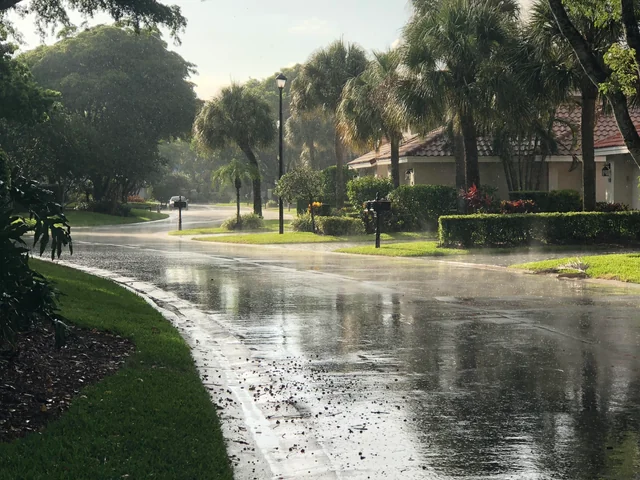- Learn when a roof replacement is necessary versus a simple repair.
- Understand the role of failing sealant and missing shingles in causing leaks.
- Discover how to prevent additional damage, such as costly ceiling repair.
Discovering a roof leak can be stressful, especially when it begins to affect the interior of your home. Many homeowners worry that fixing a leak might require a complete roof replacement. While this is sometimes the case, it’s not always necessary. Factors like the extent of water damage, the presence of missing shingles, and the condition of failing sealant will largely determine whether a partial repair or a full roof removal is the best solution. Knowing what to look for and understanding your options can help you make the right decision for your home.
Common Causes of Roof Leaks
To determine the best repair approach, it’s important to identify the root cause of the leak. Some common culprits include:
-
- Failing Sealant
Sealants play a critical role in protecting vulnerable areas of your roof, such as where vents, chimneys, or skylights are installed. Over time, exposure to UV rays, temperature fluctuations, and weather elements can cause these sealants to crack, shrink, or deteriorate. When this happens, water can easily seep into the structure, leading to noticeable leaks.
-
- Missing Shingles
Severe weather, such as heavy winds or hail, can loosen or completely remove shingles from your roof. This exposes the underlayment or roof decking, making it susceptible to leaks. Even a few missing shingles can lead to significant water damage if left unaddressed.
-
- Water Damage
Prolonged exposure to moisture can cause extensive water damage, impacting not just your roof but the supporting structures beneath it. This can manifest as sagging rooflines, warped decking, or damp spots in your attic. If this damage spreads too far, repairing isolated areas may not suffice.
- Improper Installation
In some cases, leaks stem from poor installation techniques. For example, improperly placed flashing or uneven shingle alignment can allow water to infiltrate. This issue might necessitate more extensive repairs.
Signs That a Full Roof Replacement May Be Necessary
While many leaks can be fixed with targeted repairs, some scenarios call for a complete roof replacement. These include:
-
- Extensive Water Damage
When water damage has compromised large portions of your roof deck, a replacement may be the safest option. Signs of this include widespread sagging, mold growth in the attic, or deteriorating insulation.
-
- Widespread Missing Shingles
A few missing shingles are manageable, but large areas of damage or patterns of consistent shingle loss indicate deeper problems. In these cases, patching up individual areas may only provide a temporary fix, making a full roof replacement more cost-effective in the long run.
-
- Roof Age
Roofs nearing the end of their lifespan are more prone to leaks and other issues. For example, asphalt shingle roofs typically last 20–25 years. If your roof is aging and leaking, investing in a replacement may save you from ongoing repair costs.
- Persistent Leaks Despite Repairs
If you’ve already attempted repairs but leaks continue to appear, the issue might be rooted in a systemic failure. Replacing the roof ensures all vulnerabilities are addressed, giving you peace of mind during future storms.
When Are Repairs Enough?
Not all leaks require a complete overhaul of your roof. Repairs may suffice when:
- Localized Issues Exist: Problems like isolated failing sealant or a few missing shingles can be addressed without removing the entire roof.
- Minimal Structural Impact: If the underlying structure, such as the roof decking, remains intact and unaffected by moisture, repairs can resolve the problem.
- Budget Constraints: Repairs are often more affordable than replacements. For homeowners dealing with smaller leaks, focusing on targeted fixes can keep costs down while restoring functionality.
The Importance of Timely Repairs
Delaying repairs, even for seemingly minor leaks, can result in bigger issues over time. Here’s why prompt action matters:
- Preventing Interior Damage: Leaks can lead to unsightly stains, peeling paint, and the need for costly ceiling repair. Additionally, prolonged exposure to water can damage flooring, furniture, and personal belongings.
- Avoiding Mold and Mildew: Moisture from leaks creates the ideal space for mold and mildew growth. This affects your home’s structure and poses health risks to you and your family.
- Protecting Structural Integrity: When water infiltrates your roof, it can weaken critical components like the decking, rafters, and insulation. With enough time, this can lead to severe structural damage that’s far more expensive to address than the initial repair.
Steps to Address a Roof Leak
If you notice signs of a leak, here’s how to address it:
- Identify the Source: Look for common culprits, such as failing sealant, missing shingles, or visible water damage in your attic or on ceilings.
- Contain the Leak: Use a bucket or tarp to catch water and prevent further interior damage while waiting for professional assistance.
- Consult a Roofing Expert: Professionals can assess the extent of the damage and recommend whether a repair or replacement is necessary.
Roof leaks don’t always mean you need a full roof replacement. By identifying the root cause—whether it’s failing sealant, missing shingles, or water damage—you can determine whether targeted repairs will suffice or if a replacement is the best solution. Acting quickly to address leaks can prevent costly ceiling repair needs and protect your home from further damage.
If you’re experiencing roof leaks or need professional advice, contact Jack C. Wilson Roofing Co. for expert assistance.


